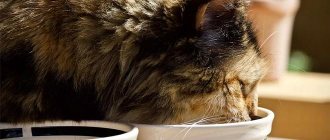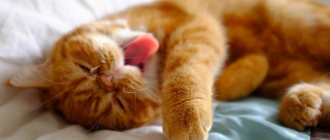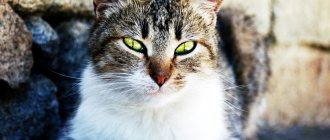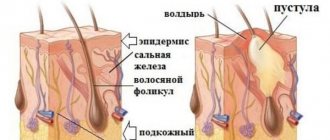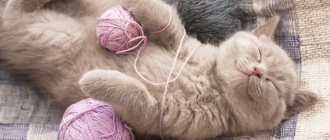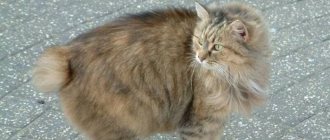Composition and action
The active component of the antibacterial drug is the substance of the same name - ceftriaxone. This is a semisynthetic antibiotic of the cephalosporin group. Antimicrobial activity is achieved by suppressing the cell membranes of pathogenic microorganisms. Cephalosporin is effective against gram-negative bacteria, including:
- enterobacteria;
- Escherichia;
- Klebsiella;
- salmonella;
- shigella and others.
In addition, the drug is active against gram-positive microorganisms - staphylococci and streptococci, anaerobic bacteria - for example, clostridia.
Important!
Cephalosporin is successfully used to treat infectious diseases even when commonly prescribed antibiotics are ineffective: penicillins, aminoglycosides, and other cephalosporins.
The drug is characterized by its rapid action: 2 hours after intramuscular injection of the solution, it enters the bloodstream and reaches all organs and tissues through the bloodstream.
Administration of medication
Important to remember: Ceftriaxone is not administered subcutaneously! Cats are injected intramuscularly. There are several general rules that must be followed to treat an animal at home .
- It is better to use insulin syringes - it is easier to measure the dosage, and a short needle does not carry the risk of significant damage.
- It is better to stab in the hind leg, slightly above the hock joint.
- The needle is inserted quickly, and the solution itself is inserted slowly.
- The needle must be inserted at an acute angle (about 45 degrees) towards the base of the tail.
- The cat must be immobilized before the procedure (you can wrap it in a towel). But, since the injection is unpleasant even with an anesthetic, she will almost certainly twitch her paw convulsively.
- In order not to torture the animal in vain, you should alternate paws during the course of treatment (back-front or right-left). In the front paw you can inject into the muscle near the shoulder.
If the owner is not confident in his abilities as a “nurse” or has an animal “with character,” it is better not to trust his own abilities. The cat may jerk violently and damage the muscles with the needle. And the owner may get it from him for lack of dexterity. The veterinarian will give the injection better in any case. If it is not possible to visit a veterinarian for each injection, you need to ask him to give at least the first one in order to better master the technique.
The total dosage of Ceftriaxone (that is, the number of injections per course of treatment) is determined only by the veterinarian. It can be adjusted along the way.
Although Ceftriaxone begins to act within 2-3 hours after administration, you should not hope for such a quick effect. But, if after several days of using the drug no noticeable improvements are observed or the disease progresses, the cat should be immediately taken to a specialist.
Despite the number of restrictions and contraindications, many veterinarians successfully use Ceftriaxone for cats. There are no ideal drugs, but this antibiotic has repeatedly proven its effectiveness.
Source koshkamurka.ru
Ceftriaxone is a 3rd generation antibiotic, the main property of which is to inhibit the growth of the walls of harmful bacteria. The drug is resistant to both gram-negative and gram-positive bacteria.
Treatment of cats with Ceftriaxone
This drug is used to treat cats that suffer from bacterial infections. Indications for use of the drug in cats are sepsis and sexually transmitted diseases. In addition, Ceftriaxone for cats is prescribed if surgery has taken place, most often after castration.
You should never self-prescribe antibiotics. You can give ceftriaxone to your cat only as prescribed by a doctor and strictly in the prescribed doses.
Ceftriaxone - instructions for cats
The dose of Ceftriaxone for cats depends on the weight of the animal. First, a bottle of the drug (1 g) is diluted in 2 ml of lidocaine and 2 ml of water. This mixture is injected intramuscularly. The injection is quite painful, so the cat must be well secured during the injection.
So, the dosage of the antibiotic Ceftriaxone for cats:
- with a weight of less than 2 kg - half a milliliter once a day, the course of treatment is no less than 7 and no more than 10 days;
- with a weight of more than 2 kg - one milliliter once a day, the course of treatment is no less than 7 and no more than 10 days.
After completing the full course of treatment, there should be at least three months before mating.
Side effects of Ceftriaxone in cats
Possible side effects from various orgasm systems: allergies, urticaria, bronchospasm, nausea, vomiting, constipation, flatulence, liver dysfunction, leukopenia, lymphopenia, thrombocytosis, renal dysfunction, anuria, oliguria, headache, candidiasis, superinfection, etc.
Contraindications for Ceftriaxone in cats
The drug should not be given to cats suffering from kidney or liver failure, peptic ulcer disease, as well as premature kittens, pregnant and lactating animals.
Source womanadvice.ru
"Ceftriaxone" is a strong antibacterial agent that is active against most microorganisms. It inhibits the growth of the walls of pathogenic bacteria, so addiction to it does not occur. Ceftriaxone is used quite often for cats. It is needed for the treatment of severe infectious diseases, as well as for the prevention of infection after surgery. But this drug can only be used as prescribed by a veterinarian.
Purpose
Given the wide spectrum of antibacterial action, veterinarians prescribe Ceftriaxone for the treatment of the following diseases:
- pneumonia, bronchitis and other respiratory diseases;
- otitis;
- sepsis;
- cystitis and other infectious diseases of the genitourinary system;
- pathologies of the liver, biliary tract;
- chlamydia;
- osteomyelitis and other bacterial pathologies of the musculoskeletal system;
- soft tissue infections;
- diseases of the gastrointestinal tract of a bacterial nature;
- meningitis, etc.
In the postoperative period and after serious viral diseases, Ceftriaxone will help to avoid complications - the development of secondary bacterial infections. In addition, the antibiotic is prescribed for serious damage to the skin - for the treatment of wounds and the prevention of sepsis.
Pneumonia and bronchitis in cats
Pneumonia in pets is a serious disease of the respiratory system that can have life-threatening complications for the animal. The pathology may be accompanied by the accumulation of fluid and pus in the lungs, causing breathing problems and a general deterioration in health.
Most often, the pathology affects small kittens and older animals whose immunity is weakened. Treatment involves the mandatory use of antibiotics, and Ceftriaxone is the number one drug in the fight against infection. However, antibiotic therapy can only be carried out as prescribed by a veterinarian: after examination and clinical tests, he will choose the drug that is most effective against the causative agent of the pathology.
The cause of the inflammatory process in the lungs can even be ordinary hypothermia. But most often pathology is caused by pathogenic microorganisms - viruses, bacteria or fungi. In addition, so-called lungworms can parasitize your pet’s body. In the process of life, they release dangerous toxins that cause dysfunction not only of the respiratory system, but also of other body systems.
Important!
Inflammation of the lungs can be a consequence of acute respiratory or immunodeficiency diseases, or the penetration of a foreign object into the trachea, causing sepsis.
Pneumonia without treatment can lead to serious complications - chronic bronchitis, pulmonary edema. A severe form of pathology can lead to the destruction of part of an organ, which ultimately causes respiratory or heart failure, infectious-toxic shock. Toxins accumulate in the body, which increases the load on the liver and kidneys, which cannot cope with their function of removing toxins from the body. Pneumonia can be fatal, especially in kittens – their bodies are not always able to cope with such serious complications.
Symptoms of pneumonia:
- increased body temperature;
- refusal to eat;
- lethargy, depressed state;
- dry nose;
- increased thirst.
As the pathology develops, characteristic signs will be observed: cough - first dry, then with sputum, fever, mucus discharge from the nose, increased salivation, cyanosis - blue discoloration of the mucous membranes. Due to difficulty breathing, the cat keeps its mouth slightly open and sticks out its tongue. When coughing, your pet may feel pain in the lungs, so it meows pitifully. If you don’t let it get to this point and contact a veterinarian at the first suspicion of a disease, the chances of a quick and successful cure are very high. To quickly combat the infection, veterinarians prescribe antibiotics, including Ceftriaxone.
Reviews about the use of the drug "Ceftriaxone"
Many owners of furry pets write that this antibiotic saved their pet from a serious infection. Basically, Ceftriaxone is prescribed after sterilization operations. The owners note that this medicine helped to avoid complications, the wound healed quickly, and there was no pus. Many animals tolerate the drug without side effects; the only drawback of these injections is that they are very painful to install. But there are also reviews that note that the cat developed a severe allergic reaction, vomiting or impaired kidney function. If you do not pay attention to side effects after the first injection, the animal may die.
Dosage
You can buy powder for preparing an injection solution at a regular pharmacy. The drug differs in dosage - the content of the active substance, which should be taken into account when purchasing, based on the recommendations of the veterinarian. The powder can be diluted with water for injection, Novocaine or Lidocaine. The injections are painful, Lidocaine will help relieve negative feelings, but it often causes allergic reactions and heart problems. Therefore, it is better to use 0.5% Novocaine - for 1 g of Ceftriaxone - 5 ml of Novocaine.
The solution is administered intramuscularly, subcutaneous administration is prohibited! The injection is placed in the thigh muscle using a syringe with a thin needle (for example, insulin). Having secured the pet, the needle should be inserted at an angle of 45 degrees and the medicine should be slowly injected. The next injection can only be given in the other thigh.
After administering the required dose of the solution, its remains cannot be stored. For each injection you need to dilute a new portion. A single dose of the drug is 0.5 ml of solution - for cats weighing less than 2 kg, 1 ml - for larger animals. Injections are given once a day, at the same time. The usual course of treatment is 7-10 days.
Important!
If no results are observed after three injections, or the animal’s condition worsens, you should contact your veterinarian.
How to give a cat an injection correctly
To prevent the development of infection after sterilization and for certain diseases, veterinarians often prescribe Ceftriaxone. The owners of the house have to give injections to the cat, this saves time and money on a daily visit to the clinic. But not everyone knows how to give injections. The basic rules are the same as for injections for people: sterility, adherence to the exact dosage, and others. But there are some special features for cat injections.
- "Ceftriaxone" is administered to the pet intramuscularly. It is best to do this at the back of the thigh. You need to make sure that the animal’s muscles are not tense; to do this, calm the cat down and massage its paw.
- There is no need to lubricate the animal's skin with alcohol, since cats have an antibacterial layer on it. The main thing is that there is no inflammation or dirt at the injection site. And you should not touch the needle with your hands.
- It is better to use a thin insulin syringe to administer the drug. It holds just 1 ml. This is exactly how much Ceftriaxone solution is needed for large animals. This syringe is better because it has a thin needle. This injection is already painful, but with a thick needle it will be even worse.
- It is better to have someone hold the cat during the procedure. The injection must be done with clear, confident movements, and try to finish everything quickly.

